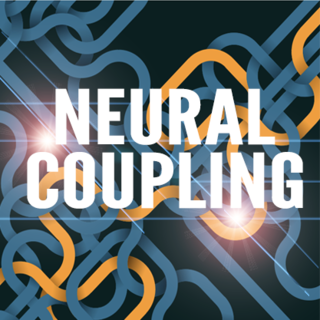Flow
How Teams and Groups Get "In the Zone"
Neural synchrony is a potential metric for team communication.
Posted October 15, 2021 Reviewed by Kaja Perina
Key points
- A team must have a common purpose, complimentary skills, performance goals, commitment, and mutual accountability.
- Peak performance in teams can be enhanced by flow, but it also requires trust.
- Transformational conversations increase a team’s abilities to connect, navigate, and grow.
By Nicklas Balboa and Richard D. Glaser, Ph.D
Coaches, managers, and leaders across industries—sports, education, music, and business—are wondering how they can improve their team’s abilities to work together. One method for success and delivering results is getting into in “the zone”, or a state of flow that enables people to get on the same page and rapidly share and integrate information across their team.
Flow States and Neural Synchrony

Neuropsychological flow is characterized by a state of improved focus, reaction time, automaticity, and is sometimes accompanied by the dilation or slowing of time, an effect known as Tachypsychia. While the neurochemical correlates of individual flow states—norepinephrine, dopamine, serotonin, endorphins—are well documented, the neural correlates of group flow behavior or neural synchrony are now under investigation.
A recent neuroscience study published in eNeuro found group flow states have unique neural signatures that have the potential to help managers better understand and improve team performance. Researchers used a musical rhythm game (O2Jam U) similar to guitar hero and tested group flow with EEG and MRI imaging techniques. If you are unfamiliar with either game, the player(s) press several buttons at the same time as a musical note scrolls on the screen. It’s a game of rhythm and timing. To create teams, the participants split up each button and worked together to obtain the best score. They found that teams in flow states showed increased beta-gamma power in an information integration hub—the middle temporal cortex—as well as higher neural synchrony, or coupling between brains. This synchrony principle demonstrates that when people connect at a deep level with others, brain patterns mimic each other’s.
Neural synchrony is emerging as a reliable metric for successful communication in groups and teams. Professor Joy Hirsch, Neuroscience Director of the Brain Function Laboratory at the Yale School of Medicine, and her lab have consistently demonstrated that synchrony between two brains in real time, interactive environments measures the quality of social understanding. Similar effects have been found in an educational setting as well. neural alignment, or the degree that an individual learner’s neural activity matches those of other students' and the teacher's, has been shown to predict learning outcomes.
All in all, these researchers believe that measures of team flow and neural synchrony are targets for optimizing human collaboration.
Team Synchrony
Flow states can be experienced by individuals as well as groups.
However, as the researchers pointed out, team flow enables a positive mental state that is superior to individual flow and everyday social interactions. In other words, there is no better feeling than working well with others when everyone is in “the zone”.
Simply putting a group of people together to work on a task does not guarantee a group flow state. A team must have a common purpose, complimentary skills, performance goals, commitment, and mutual accountability. In order to establish high fidelity synchrony between team members, there also needs to be a layer of established mutual trust. When it comes to peak performance, team members at times need to be able to trust that others will be where they need to be and do what they need to do in order to deliver the best results.
This trust is achieved through high level conversations and practice: what Conversational Intelligence calls Level III, or transformational conversations. These conversations create a ‘sharing and discovering’ dynamic that builds partnerships and trust founded in energy and enthusiasm. This Conversational Intelligence, our human abilities to connect in healthy ways through language, builds and boosts trust to achieve mutual success. It's the intelligence that gets better as we do it together.
Trust and Performance
Tom Brady and Rob Gronkowski's connection is perhaps the most dynamic and winningest duo in modern sports. Whether they are on the Patriots or the Buccaneers, they flow and perform at the highest level. Why? Trust. Tom Brady doesn’t need to worry about where Rob Gronkoswki is going to be on the football field. He trusts that Gronkowski will be there when the ball is thrown. If Brady had to spend his time worrying about Gronkowski’s routes, he might end up with his butt on the turf. Instead, the two flow together and play on the same wavelength, often scrambling to create offense in new and creative ways when things don’t go as planned.
This is a winning formula. How did they get to that trust level? Through practice, discussion of plays, and a mutual understanding of goals—level 3 conversations followed by practice. In fact, Gronkowski trusted Brady so much that he came out of retirement to join him in Tampa Bay after a series of conversations. Brady and Gronkowski were able to replicate their past successes in New England again in Tampa Bay by bringing with them a culture of trust that apparently can permeate any organization’s culture.
They really are innovating as leaders in their craft.
The Bottom Line
People want to be connected to each other and be part of a winning team. We also want to feel like we contribute to the success of the winning team. The push and pull between these two drives limits innovation and performance because they lead us think that pursuing the “correct” answers, or the ones that we get right, are the keys to victory. We often get stuck in Level I & II conversations where we focus on defending our position, instead of co-creating in Level III to drive results. In short, you cannot get innovation without Level III conversations built on trust.
Repetitive thinking reinforces what we know, at the expense of what is new and innovative—we fall into the patterns of our predictive brain and create biases. In order to connect and sync with others, we need to be aware on our thought process, pause for a second and evaluate where we are, then work with others to build trust.
This process of self-discovery, growth, and synchrony with others is the foundation of Conversational Intelligence. By increasing a team’s abilities to connect, navigate, and grow with others, you can optimize performance to reach peak levels.




